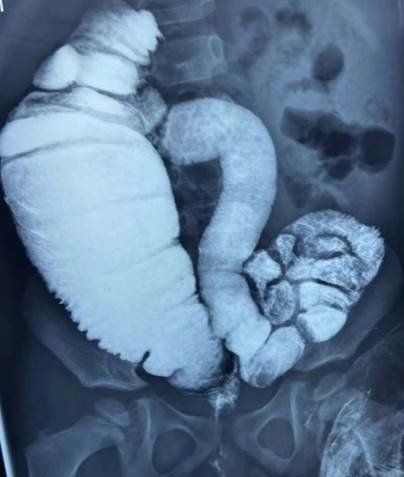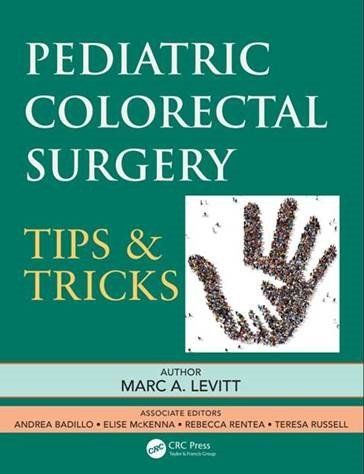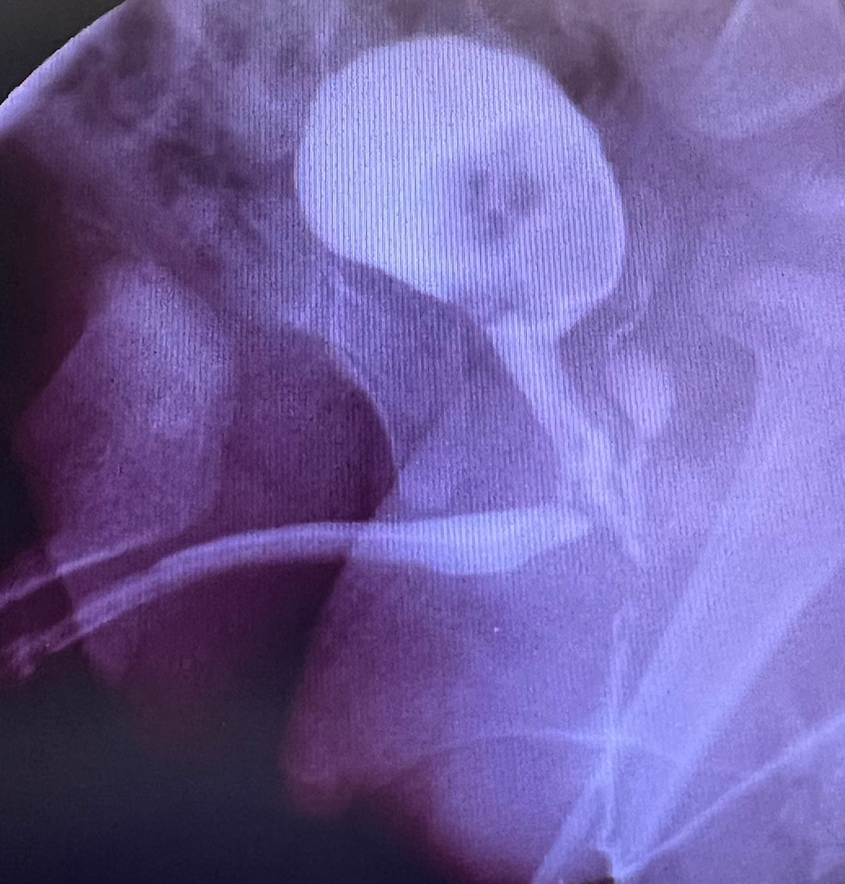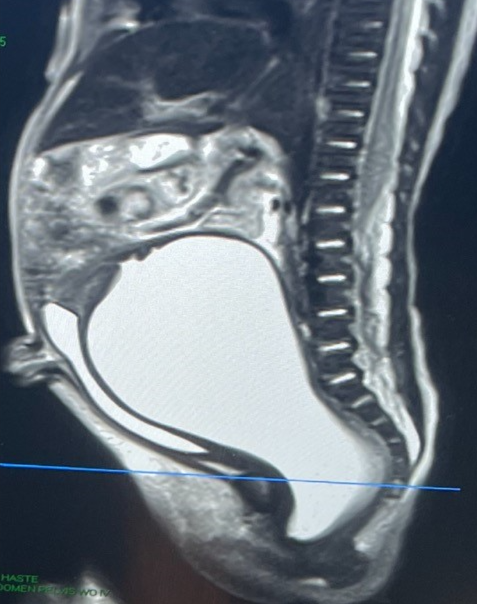COLORECTAL QUIZ: November 7, 2022
Happy Monday!
Last week I asked you about a case from a colleague who had an ARM male with a perineal fistula they operated on in the newborn period. On postoperative day 3, the baby started to pass urine through the anoplasty, showing there to be a urethral injury. I asked you how you would manage this problem, and how you would avoid this problem at the initial anal repair?
Our colorectal fellow Shimon Jacobs replied with an outstanding answer:
For initial management I would try a conservative approach with cystoscopy, placement of a circular stent to prevent a stricture or atresia at the urethral injury site, and SPT for temporary urinary diversion with prophylactic antibiotics. Then 6-8 weeks out, take out the stent and perform cystourethrogram through the SPT to see if rectourethral fistula has sealed off. If persistent a surgical closure may be needed with PSARP approach—if close to the perineum this may be able to be closed primarily like a vestibular fistula through the anoplasty, or may need a full PSARP incision, and possibly a graft patch if strictured.
[I would just add that this redo will require a mobilization of the anterior rectal wall and bringing down healthy rectum to cover the area of the repaired fistula, with coverage of that space with an ischiorectal fat pad as well.]
To avoid this situation altogether, consider this new idea (learned from an old technique) which avoids an anterior rectal wall dissection, and thus fully prevents any possibility of injuring the urethra.
https://www.expertsinsurgery.com/programs/posterior-rectal-advancement-anoplasty?categoryId=49506
This video accompanies this article:
https://pubmed.ncbi.nlm.nih.gov/35012765/
And here is another useful article on the same subject:
https://pubmed.ncbi.nlm.nih.gov/32399763/
Ok, now for this week:
A colleague asked how we would handle this situation – a 5-year-old patient with ARM and soiling who needs bowel management to be clean. In addition to a daily rectal enema – what are the options for a mechanical cleaning program? Below is the contrast study after their repair which required a pull-through of the right colon down the right side of the pelvis.

How would you handle this case?
We will get back to you as soon as possible.
Please try again later.
Please note, our weekly quiz is also posted on the Pediatric Colorectal and Pelvic Learning Consortium, (PCPLC) website, www.pcplc.org
https://www.pcplc.org/educational_courses/quizzes
Access code is: pcplc-2022!
Pediatric Colorectal Surgery Tips and Tricks is now out. You can order it using this link: https://bit.ly/Levitt-CRCBooks and this discount code: MAL22.
All proceeds from the sale of the book benefit Colorectal Team Overseas, www.ctoverseas.org

All of our operative videos can be found at www.expertsinsurgery.com and also on the StayCurrent app, the colorectal channel.
Here is the current list of the Colorectal Quiz podcasts, best viewed via the StayCurrent app.
The newest Colorectal Quiz Episode # 34 "Newborn Perforation in ARM" is at the bottom of the list.
Colorectal Quiz Episode 1 ARM - Low Bulbar Fistula
https://staycurrentapp.app.link/wK2FhonUEhb
Colorectal Quiz Episode 2 When to redo a PSARP
https://staycurrentapp.app.link/RX2eeDqUEhb
Colorectal Quiz Episode 3 Hirschsprung Disease
https://staycurrentapp.app.link/UnFRkprUEhb
Colorectal Quiz Episode 3.5 Proximal Hirschsprung Disease
https://staycurrentapp.app.link/JiaWCGsUEhb
Colorectal Quiz Episode 4 Classic Hirschsprung disease - Surgical Technique
https://staycurrentapp.app.link/qGWLoGtUEhb
Colorectal Quiz Episode 5 Proximal Hirschsprung Disease Surgical Technique
https://staycurrentapp.app.link/AiGHjcvUEhb
Colorectal Quiz Episode 6 Bowel Management Part 1
https://staycurrentapp.app.link/SVuVYWvUEhb
Colorectal Quiz Episode 7 Bowel Management Part 2
https://staycurrentapp.app.link/b8IhkKwUEhb
Colorectal Quiz Episode 8 Motility Disorders Part 1
https://staycurrentapp.app.link/NRerIoxUEhb
Colorectal Quiz Episode 9 Motility Disorders Part 2
https://staycurrentapp.app.link/s2cVlbyUEhb
Colorectal Quiz Episode 10 Total Colonic Hirschsprung Disease Part 1
https://staycurrentapp.app.link/fEtTMRyUEhb
Colorectal Quiz Episode 11 Total Colonic Hirschsprung's Part 2
https://staycurrentapp.app.link/MNqS9yzUEhb
Colorectal Quiz episode 12 Newborn ARM Part 1
https://staycurrentapp.app.link/x5UL6DBUEhb
Colorectal Quiz Episode 13 Newborn ARM Part 2
https://staycurrentapp.app.link/YqVpTmCUEhb
Colorectal Quiz Episode 14 ARM Newborn Part 3
https://staycurrentapp.app.link/x9mUY7CUEhb
Colorectal Quiz Episode 15 Bowel Management in Spinal Pts. Need for a urologist Part 1
https://staycurrentapp.app.link/etX3mPDUEhb
Colorectal Quiz Episode 16 Bowel Management in Spinal Pts. Need for a urologist Part 2
https://staycurrentapp.app.link/5C7GsJIDEhb
Colorectal Quiz Episode 17 Cloaca Part I
https://staycurrentapp.app.link/YGPmYZPEPhb
Colorectal Quiz Episode 18 Cloaca Part II
https://staycurrentapp.app.link/vUEzQxG80hb
Colorectal Quiz Episode 19 Hirschsprung Disease - The Obstructed Patient Part 1
https://staycurrentapp.app.link/gBzrAtLKLib
Colorectal Quiz: Episode 20 Hirschsprung Disease – The Obstructed Patient Part 2
https://staycurrentapp.app.link/W7kEcqB6vjb
Colorectal Quiz Episode 21 The History of Hirschsprung Disease
https://staycurrentapp.app.link/QXtFg2UlTjb
Colorectal Quiz Episode 22 Hirschsprung Disease - the Soiling Patient Part 1
https://staycurrentapp.app.link/OII38hVhQkb
Colorectal Quiz Episode 23 Hirschsprung Disease - the Soiling Patient Part 2
https://staycurrentapp.app.link/DA4WEDIcXlb
Colorectal Quiz Episode 24 Cloaca Part III
https://staycurrentapp.app.link/3uuEG49mkmb
Colorectal Quiz Episode 25 Perineal Groove
https://staycurrentapp.app.link/PxlGWtfswmb
Colorectal Quiz Episode 26 Perianal Crohn's Disease
https://staycurrentapp.app.link/qQbadIDjTmb
Colorectal Quiz Episode 27 Delayed Hirschsprung Disease
https://staycurrentapp.app.link/v37xYPDSDnb
Colorectal Quiz Episode 28 Female ARM Management - Perineal Fistula
https://staycurrentapp.app.link/lLH7KQr20nb
Colorectal Quiz Episode 30 Tethered Cord
https://staycurrentapp.app.link/sE57H6IPzob
Colorectal Quiz Episode 31 Müllerian Anomalies in patients with ARM
https://staycurrentapp.app.link/FuQyrjuC8ob
Colorectal Quiz Episode 32 Anorectal Malformations and Cardiac Anomalies
https://staycurrentapp.app.link/3yJWt3t1rqb
Colorectal Quiz Episode 33 Cloacal exstrophy
https://staycurrentapp.app.link/H4l85Pe2isb
Colorectal Quiz Episode 34 Newborn Perforation in ARM
https://staycurrentapp.app.link/EgIRTe14wtb




